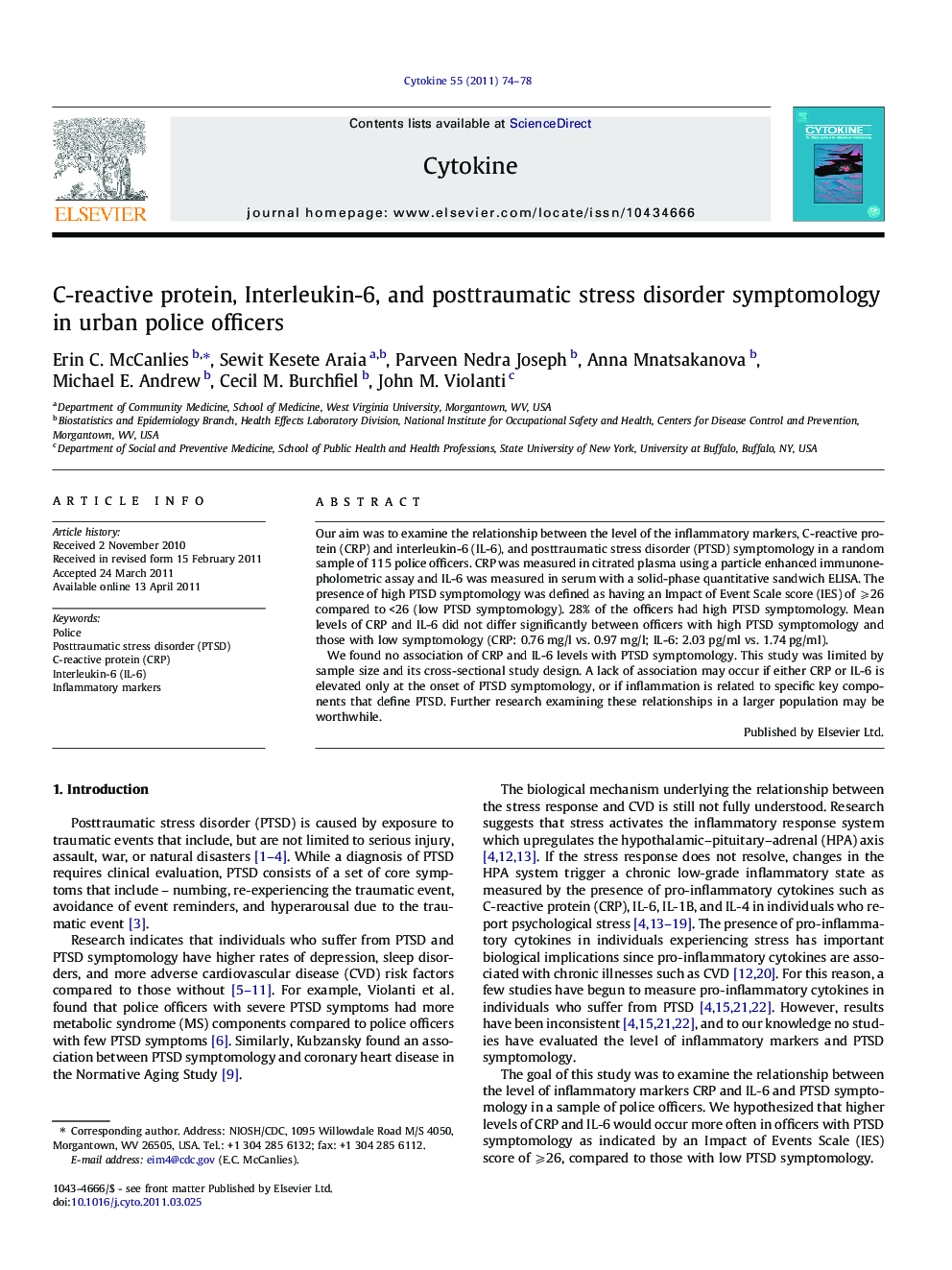| Article ID | Journal | Published Year | Pages | File Type |
|---|---|---|---|---|
| 2794670 | Cytokine | 2011 | 5 Pages |
Our aim was to examine the relationship between the level of the inflammatory markers, C-reactive protein (CRP) and interleukin-6 (IL-6), and posttraumatic stress disorder (PTSD) symptomology in a random sample of 115 police officers. CRP was measured in citrated plasma using a particle enhanced immunonepholometric assay and IL-6 was measured in serum with a solid-phase quantitative sandwich ELISA. The presence of high PTSD symptomology was defined as having an Impact of Event Scale score (IES) of ⩾26 compared to <26 (low PTSD symptomology). 28% of the officers had high PTSD symptomology. Mean levels of CRP and IL-6 did not differ significantly between officers with high PTSD symptomology and those with low symptomology (CRP: 0.76 mg/l vs. 0.97 mg/l; IL-6: 2.03 pg/ml vs. 1.74 pg/ml).We found no association of CRP and IL-6 levels with PTSD symptomology. This study was limited by sample size and its cross-sectional study design. A lack of association may occur if either CRP or IL-6 is elevated only at the onset of PTSD symptomology, or if inflammation is related to specific key components that define PTSD. Further research examining these relationships in a larger population may be worthwhile.
► 28.8% of the officers had high PTSD symptomology (IES score ⩾ 26). ► The mean level of CRP did not differ in officers with high PTSD symptomology compared to those with low symptomology (0.85 mg/l vs. 0.92 mg/l; p = 0.73). ► The mean level of IL-6 did not differ in officers with high PTSD symptomology compared to those with low symptomology (2.02 pg/ml vs. 1.78 pg/ml; p = 0.40).
